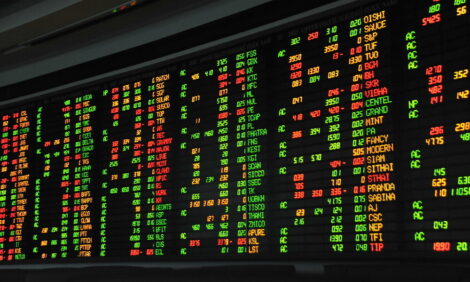



Not All is Well in Denmark
DENMARK - An overview of the Danish pig industry from the Pig Research Centre highlights not only high and fluctuating feed costs but also a lack of investment in finisher facilities, resulting in weaner exports, which, it says, has led to "an extremely unfortunate development for the national economy and for the pig industry". There is positive news, however, on animal welfare and antibiotic use, which has fallen by 20 per cent.

In the latest annual report from Denmark's Pig Research Centre - for 2012 - Lindhart B. Nielsen (Chairman) and Nicolaj H. Nørgaard (Director) offer an overview of the Centre's research as well as the state of the Danish pig industry generally.
High and fluctuating feed prices
2012 was characterised by unexpected high increases on soybean and grain prices.
This confirms the trend of the last years when feed prices have fluctuated dramatically, while pork prices have remained fairly stable with an upward trend.
For pig producers with an integrated production and own land for grain production, things look fairly good. For the group at the top in terms of productivity, the economy is even good.
However, for weaner producers purchasing feed, the situation is a lot more unstable. Fluctuating prices of feed and weaners put economy and cash-flow under considerable pressure.
Drop in finisher production
Investments have stagnated ever since the onset of the financial crisis in 2008. This is in particular seen in finisher production: small and run-down finisher facilities that are taken out of production are no longer replaced by new modern facilities.
Consequently, weaner exports increase leading to a vicious circle that puts pressure on the capacity utilisation of the slaughterhouses and thereby on pig prices as well.
This is an extremely unfortunate development for the national economy and for the pig industry.
To reverse this trend, it is crucial that it becomes possible to establish large, efficient finisher facilities.
This requires three things:
- environmental regulation that does not block or increase the costs of finisher production.
- access to capital and
- pig prices matching those of the German slaughterhouses.
Once this is settled, new finisher facilities are sure to follow.
Danish pig production is highly capable of competing on efficiency and costs – this is confirmed by the most recent analyses comparing European pig production industries.
Sow producers are ready for 2013
A survey in summer 2012 revealed that more than 80 per cent of all Danish sows are housed in groups in the gestation unit, and the rest are working hard on converting their production.
Future environmental regulation
Though the scheme for reporting changes was a step in the right direction, there is still room for improving environmental approvals and cutting back on the red tape. Pig production should be regulated according to the impact on the surroundings rather than the number of animals sold from the sites.
This principle forms part of the first reports from a commission looking into this, and if politicians follow the recommendations in the final draft of the regulations for environmental approvals and nitrogen regulation, things look good.
Animal welfare
Animal welfare is generally developing in a positive direction. This is documented in the report 'Animal welfare in the pig industry 2011'.
However, challenges still remain: DANISH audits show that the use of hospital pens and rooting and enrichment materials is still not fully implemented.
Public welfare inspections still give rise to a number of cross-compliance cases. PRC is working on more fairness in the control of de minimis thresholds and more emphasis on the general impression.
The Danish government has put forward a desire to stop castration in 2014, which now seems unrealistic. In Europe, there are simply no reliable sorting methods, and more research is therefore necessary. This is one area where Denmark must not and cannot stand alone.
Antibiotic use
The use of antibiotics in Danish pig production is an inspiration to the rest of the world.
Overall, antibiotic use has dropped by 20 per cent, and the voluntary stop of the use of cephalosporins has succeeded. It is therefore completely incomprehensible why the Minister for Food, Agriculture and Fisheries has tightened the Yellow Card Scheme.
Antibiotic use must be restricted but also in the amounts necessary.
Roads to growth
The slogan of the 2012 annual meeting and congress was 'roads to growth'. A significant pre-requisite for growth is ongoing access to new research results.
The DanAvl breeding system not only produces world-class genetics. Fees on genes also increasingly finance many of PRC's research activities that are described in this report.
Further ReadingYou can find out more about the Danish pig industry by clicking here. |







